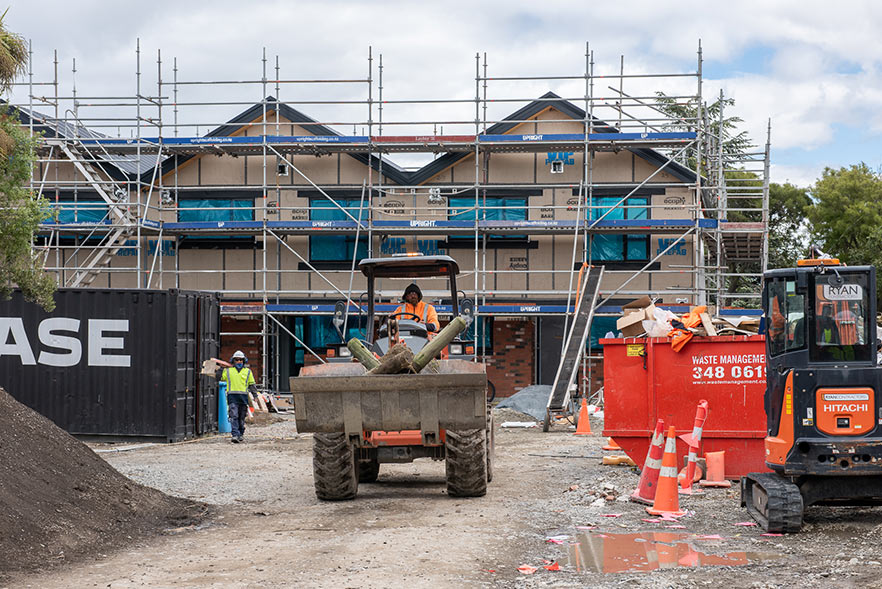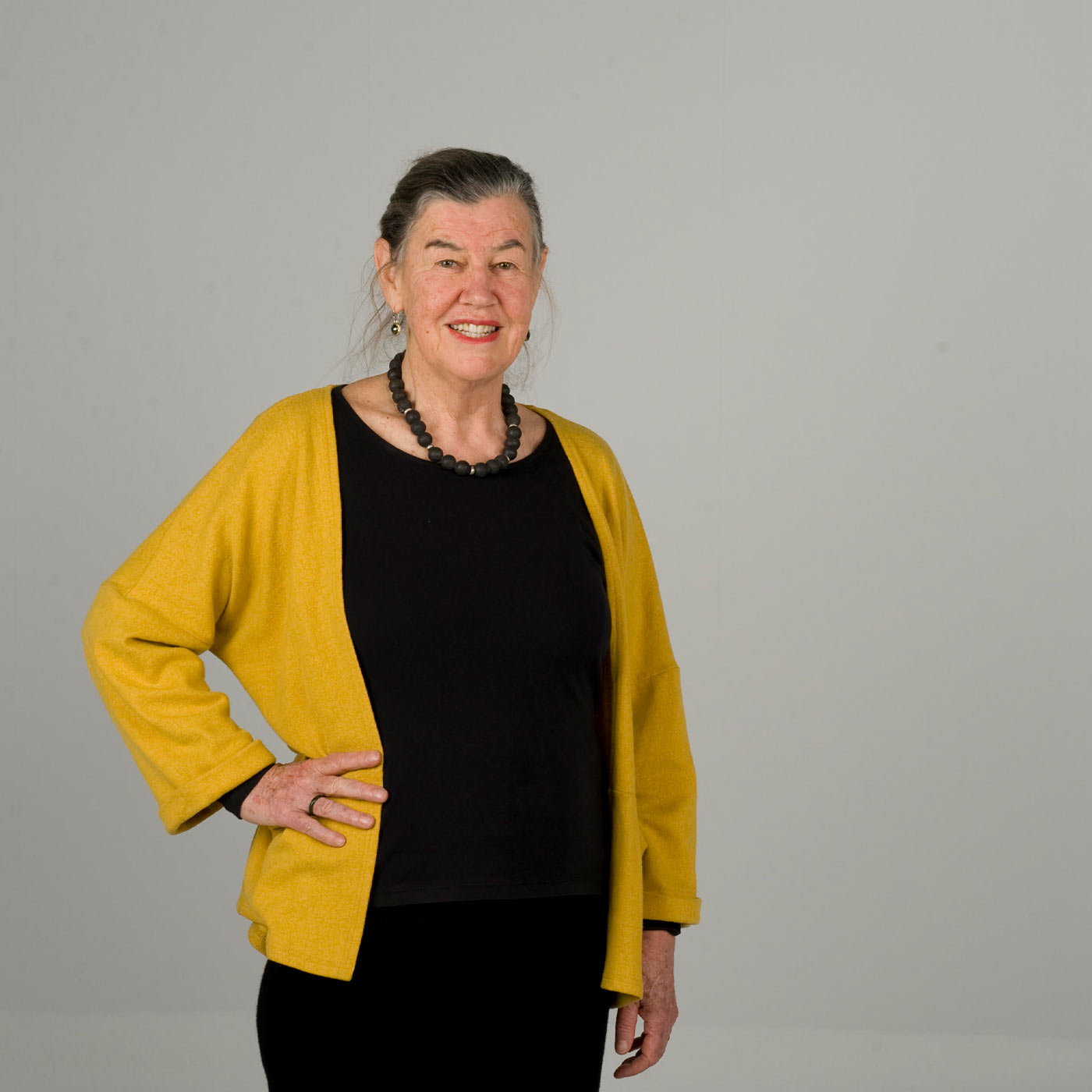Feature
Building for the people
As New Zealand embarks on its largest public housing building programme since the mid-20th century, an ambitious research project is underway at the University of Otago to map the effectiveness of different types of housing in achieving key wellbeing and health goals.
The research project, “Public housing and urban regeneration: maximising wellbeing”, is being led by Sesquicentennial Distinguished Chair, Professor Philippa Howden-Chapman, Director of the Department of Public Health's He Kāinga Oranga/Housing and Health Research Programme at the University of Otago in Wellington, and also a Director of Kāinga Oranga – Homes and Communities.
The research is supported by a $12.4 million Ministry of Business, Innovation and Employment (MBIE) Endeavour Fund grant and will enable researchers to track the results of different housing models in achieving wellbeing and health goals.
Howden-Chapman says the massive public housing building programme will shape the futures of hundreds of thousands of people over coming decades.
“There are about a quarter of a million people currently living in Kāinga Ora public housing and if you think about the fact that these buildings are built to last 50 to 80 years, there are a lot of people who are going to live in these buildings over the years. You want to do it well the first time.”
The research project brings together 24 researchers from Otago and 12 from other institutions. Among them are economists, architects, social scientists, physicists, engineers, lawyers and Māori and Pasifika researchers. They include Professor Jacinta Ruru from the University of Otago's Faculty of Law, whose expertise includes indigenous peoples' legal rights to own, manage and govern land, and who will explore the legal complications of Māori urban authorities building papakāinga housing on marae reserve land.
“We've brought together a range of different professionals with expertise in the indoor environment, in urban design and in funding and governance, to ask how we can produce the best-quality housing, which is innovative and increases the wellbeing of the tenants and the communities where these houses are,” Howden-Chapman says.
“We'll also be able to tell how warm this housing is, we'll know how much energy people use in the houses, how comfortable and safe they feel in the areas they live in, and how accepted they are into the community.”
The researchers will examine the approach taken by different public housing organisations: state housing provider Kāinga Ora – Homes and Communities, which is partnering with Tāmaki Regeneration and Ngāti Toa Rangatira; Wellington City Council; the Wellington-based social housing provider Dwell; the Ōtautahi Community Housing Trust; the Salvation Army; and the Wainuiōmata Marae Trust.
Working in collaboration with each housing provider, the University of Otago-led research group will be measuring performance on a number of agreed key outcome indicators: governance; financial arrangements and strategies; housing quality and scale; energy efficiency; transport and carbon emissions; community development; and understanding and implementation of Te Tiriti o Waitangi obligations.
Howden-Chapman says all the projects are experimenting in different ways with innovative approaches.
At one end of the scale, the Wainuiōmata Marae Trust in Wellington has formed a unique partnership with Kāinga Ora to build up to 30 homes on marae land. The papakāinga, which will be supported by a solar-powered microgrid, is providing a way for the Wainuiōmata community to deal with its own housing crisis and could become a pilot project for others around the country.
Trust Board Secretary and University of Otago, Wellington, researcher Cheryl Davies has worked with Howden-Chapman for 10 years to bring the project to life. Her motivation throughout has been to provide high-quality affordable housing for the people of Wainuiōmata.
She explains that the microgrid is designed to reduce household energy costs for the marae and their new residents, as well as to foster community independence and reduce their carbon footprint.
“A lot of what we want to do is around supporting sustainability for the families. Providing a nice, healthy home is not the only answer to addressing some of the needs of our families. Fuel poverty is a huge issue,” Davies says.
At the other end of the scale, state-funded housing provider Kāinga Ora, a Crown entity, has embarked on a new funding model, with the Government allowing it to raise $8 billion on the international bond market to fund medium- and long-term developments through the issuing of Wellbeing Bonds.
Howden-Chapman says researchers and providers will be able to assess the innovations and progress being made in the different research strands.
“This will encourage adaptive management and allow us to find out what is working well and what is not, so that the providers can adjust their plans accordingly.”
Researchers will be able to look at where providers are succeeding, and which lessons can be shared with others.
“We have a key partner in each of the different housing providers and we will pass information back and forth to them, and those key people will also get together and share information.”
Associate Professor Nevil Pierse, who is Deputy Director of the He Kāinga Oranga/Housing and Health Research Programme, leads the focus on housing quality. As part of the research, air quality sensors will be fitted in public housing to collect real-time information on indoor temperatures.

Ōtautahi Community Housing Trust has built new community housing in Sydenham, Christchurch. Photo used with the kind permission of the Ōtautahi Community Housing Trust.
Researchers were able to place sensors in Wellington City Council's Arlington Street apartments to measure indoor temperatures before the buildings were demolished. Sensors have also been placed in the Te Māra apartments which replace them, monitoring indoor temperatures both before the tenants moved in and after occupancy. The readings will enable researchers to compare the temperature inside older housing units with those in the new apartments, now leased to Kāinga Ora.
Pierse says the sensors will allow researchers to analyse the extent to which high-quality housing improves indoor temperatures, as well as how important other factors might be, such as the use of solar panels to reduce the cost of electricity.
The warmth of the homes will be a key test for all the houses in the research programme, he says.
“We know the actual temperature of children's bedrooms makes a big difference to their health and that's why we're building quality houses, but can we deliver it just with well-built houses, or do we need solar panels? Does changing the cost of electricity result in a big difference in temperature? I suspect it will.”
As well as collecting real-time data on indoor temperatures, researchers will be making use of anonymised data on residents' health and wellbeing from Stats NZ's Integrated Data Infrastructure, and will conduct interviews with directors and managers of housing programmes, public housing tenants and their community neighbours.
Howden-Chapman says the research will provide insights into how satisfied residents feel with their housing.
“We'll also be able to tell how warm this housing is, we'll know how much energy people use in the houses, how comfortable and safe they feel in the areas they live in, and how accepted they are into the community.”
A key focus will be on transport links and carbon emissions, she says.
“We'll be looking at how close the houses are to public transport and to cycling and walking routes, so that it is easier for residents to make active journeys, rather than driving their cars. One of the outcomes we are very interested in is carbon emissions, including the level of embodied carbon in the buildings.”
The research project is drawing on expertise from a top level advisory group which includes: Professors Richard Edwards and Michael Baker from the Department of Public Health at the University of Otago, Wellington; Dr Kay Saville-Smith, Research Director at CRESA and Chief Science Advisor to the Ministry of Housing and Urban Development; Rosemary Goodyear, a Senior Analyst at Stats NZ, who has particular expertise in housing; Len Cook, the former Government Statistician of New Zealand; Anaru Marshall, Lead Negotiator and Transition Manager for Te Rūnanga o Ngāti Maru and former Chief Executive of WISE Better Homes in Taranaki; Dr Manfred Plagmann, Principal Scientist at building research organisation BRANZ; Professor Simon Kingham, from the University of Canterbury and Chief Science Advisor to the Ministry of Transport; Dr Biddy Livesey, a Principal Advisor at the Ministry of Housing and Urban Development; Dr Dave Jacobs, an international expert in housing and health; and Professor Harrison Fraker, a former Dean of the University of California Berkeley College of Environmental Design.
Howden-Chapman say the research is the most ambitious public housing research project she knows of anywhere in the world.
“I would hope that by the end of the five years, not only will we be able to see with pride what Aotearoa is doing in this flourish of new homes linked to supportive tenancies; we will also be able to provide lasting evidence on the benefits of building houses which perform better than the current building code.”
“I would hope that by the end of the five years, not only will we be able to see with pride what Aotearoa is doing in this flourish of new homes linked to supportive tenancies, we will also be able to provide lasting evidence on the benefits of building houses which perform better than the current building code.”
The research will be able to demonstrate the benefits of making houses easier to heat, of using solar energy, and of having houses located near public transport and with access to cycling and walking tracks and amenities, including parks and other green spaces.
“It would give us huge satisfaction to know we've helped provide evidence to make sure that never again can we turn our backs on the critical benefits of public housing. Whether you're earning a big salary, or are on a welfare benefit, you should be able to live in affordable, safe, warm, dry housing and live a life that you value.”
CHERYL NORRIE
Project leader Otago's Philippa Howden Chapman: “Whether you're earning a big salary, or are on a welfare benefit, you should be able to live in affordable, safe, warm, dry housing and live a life that you value.”
